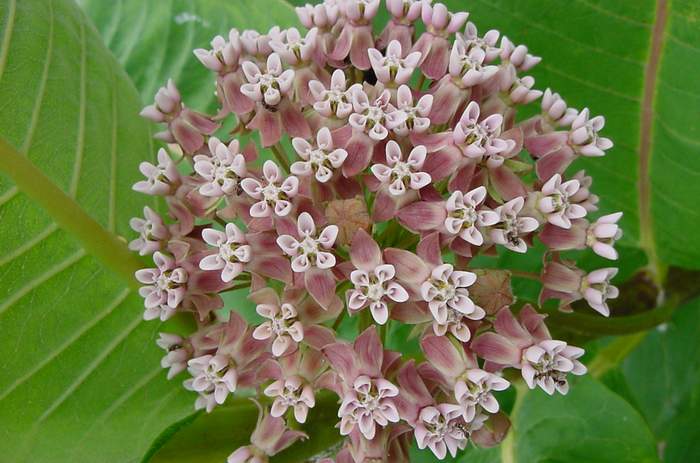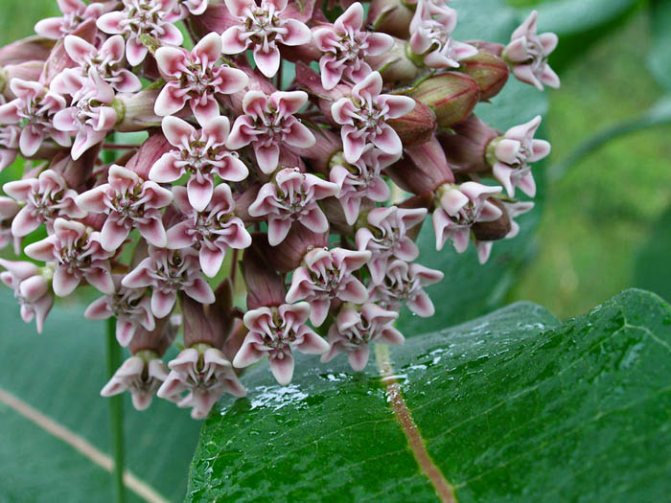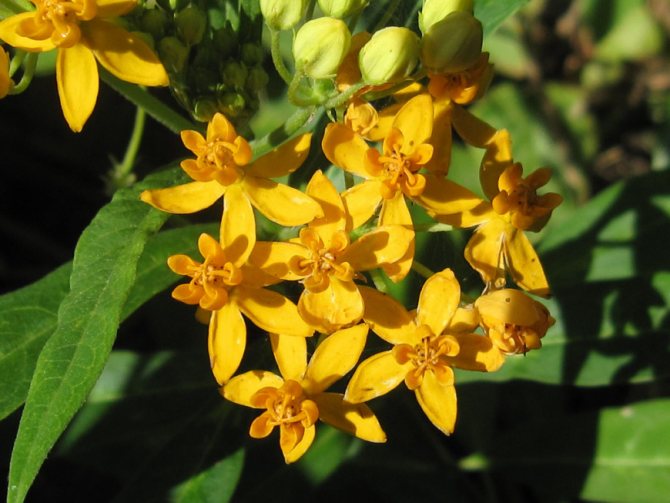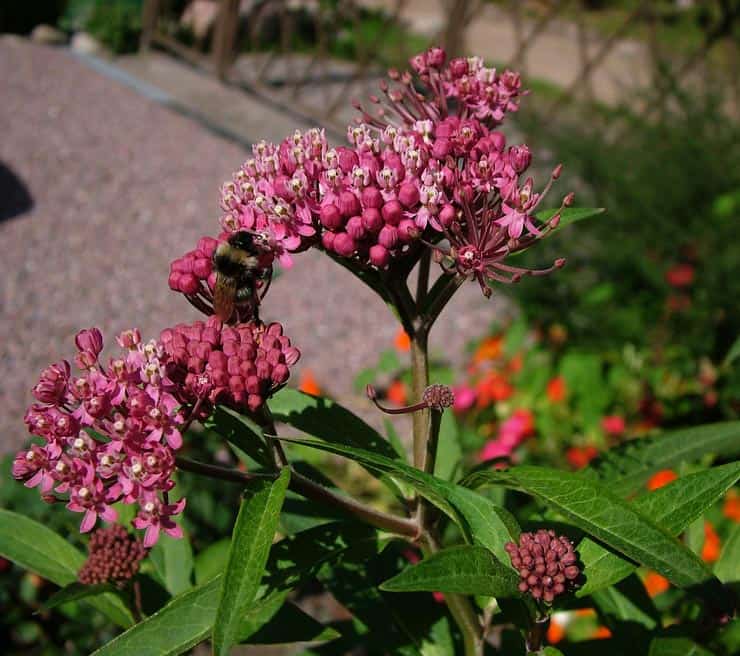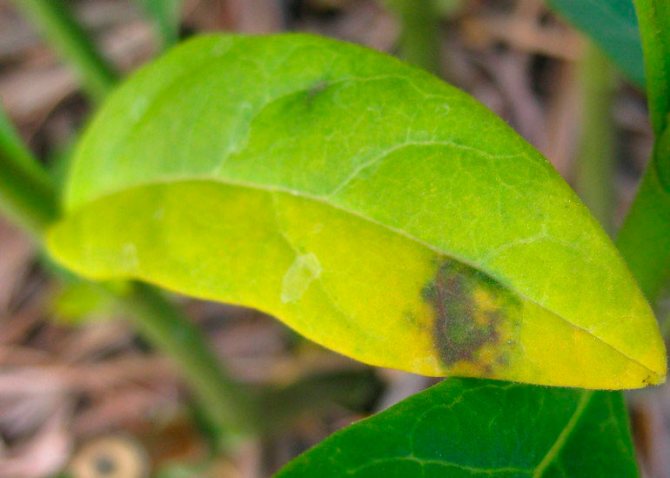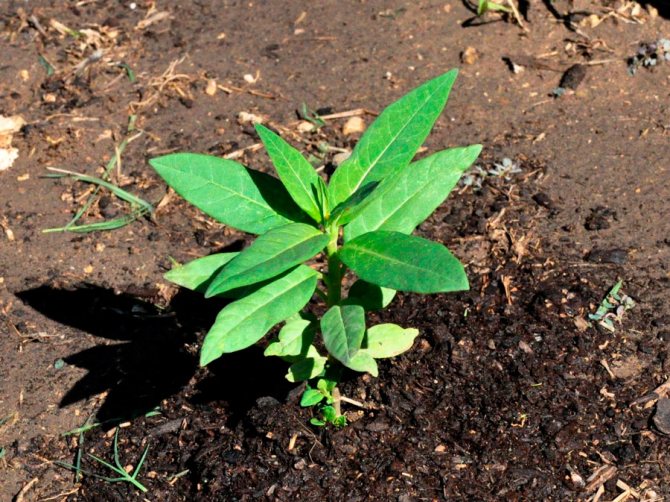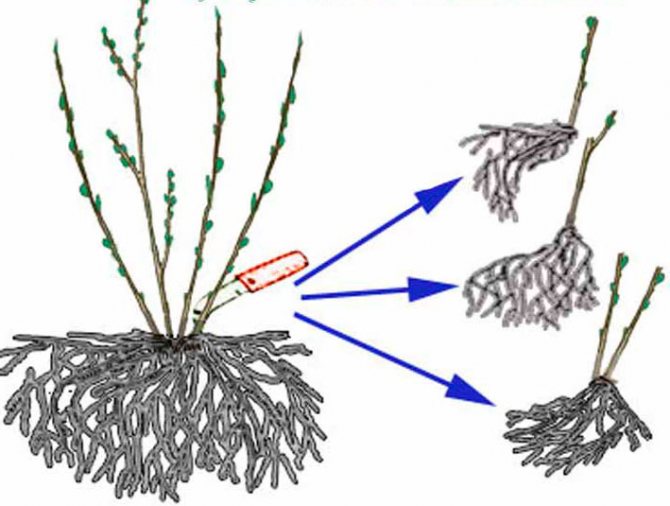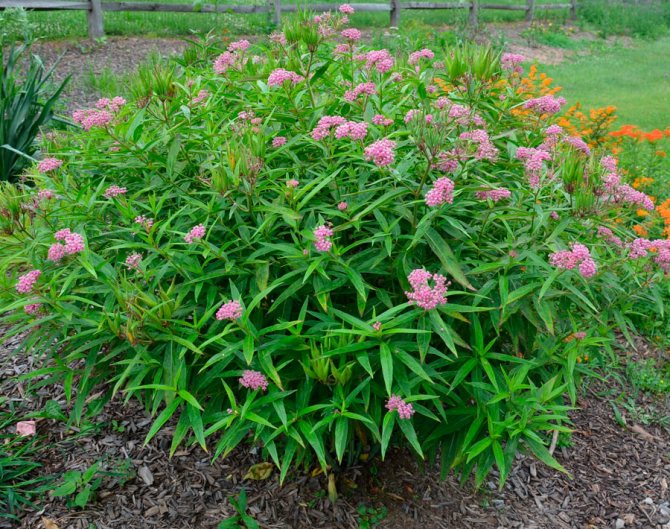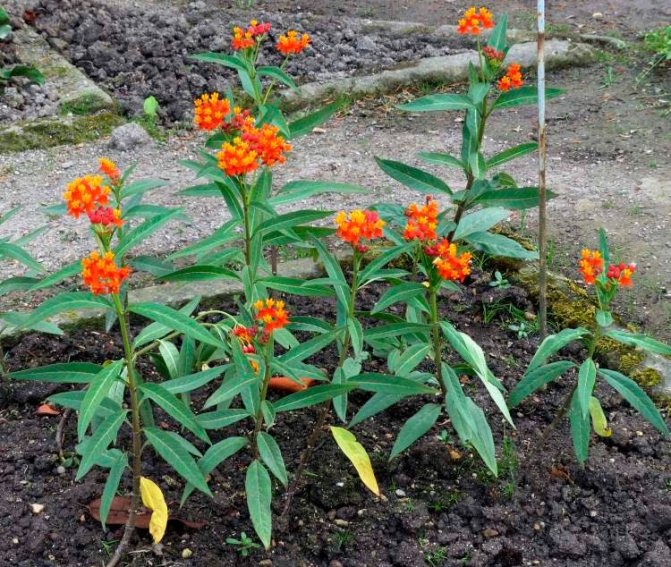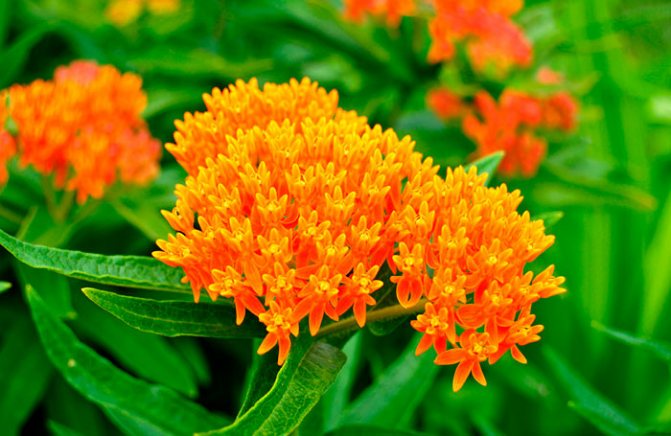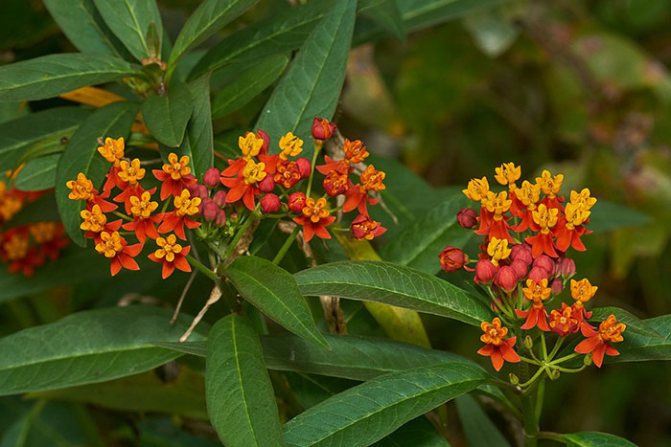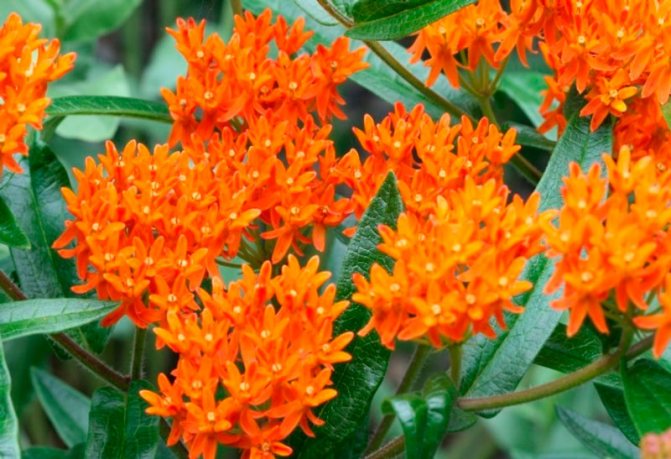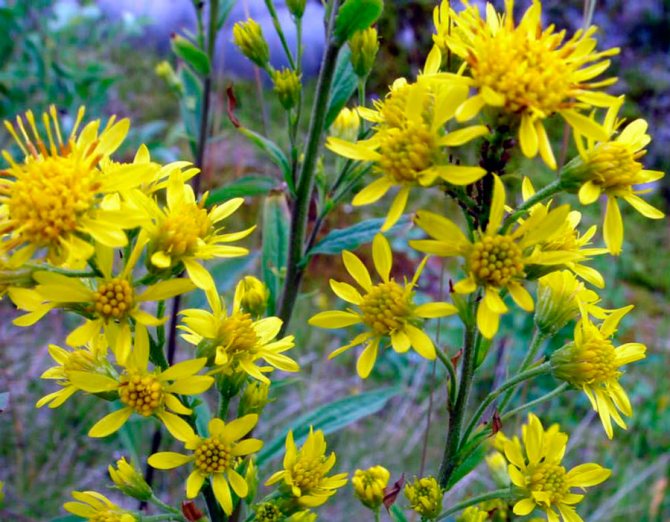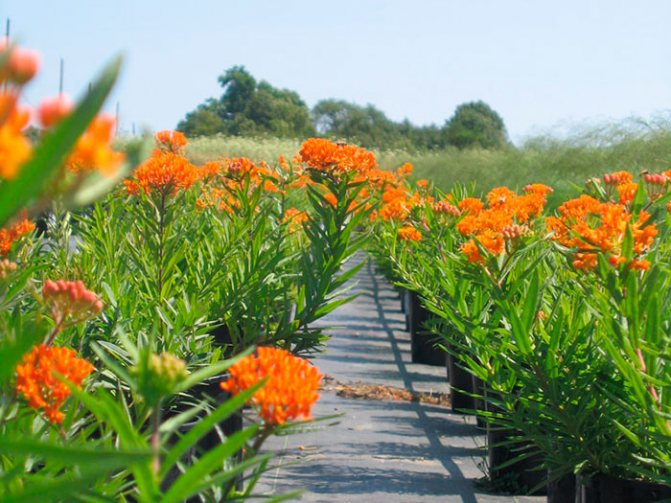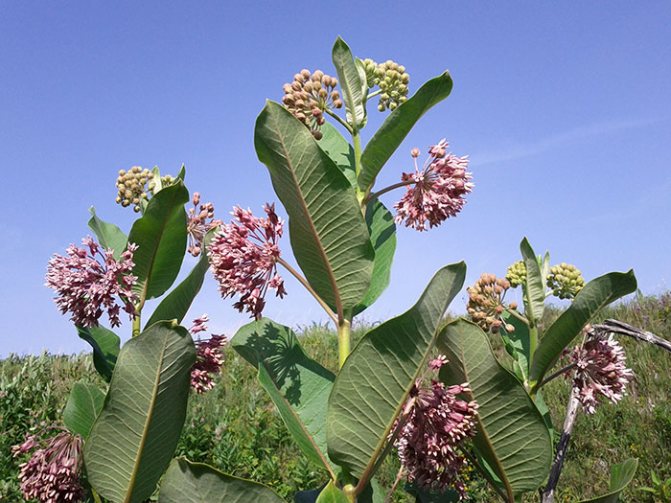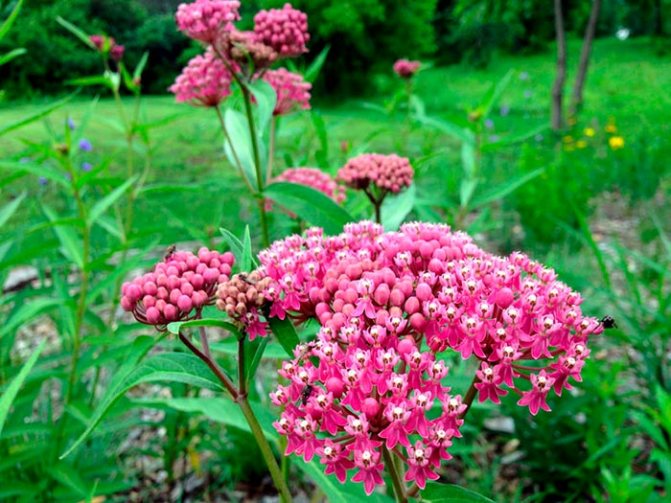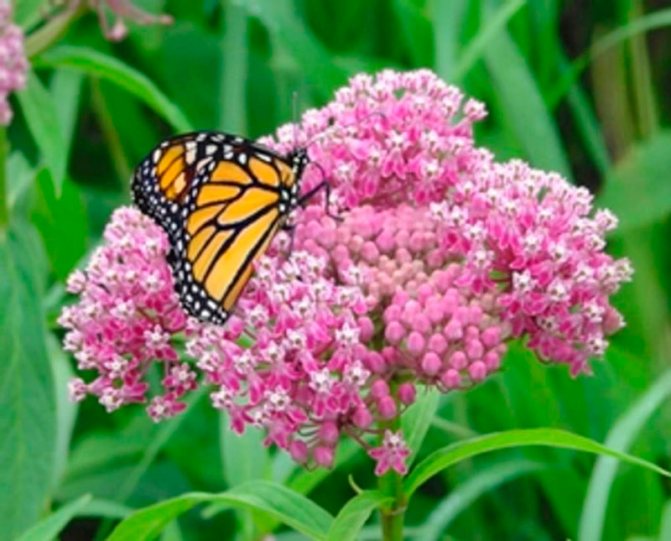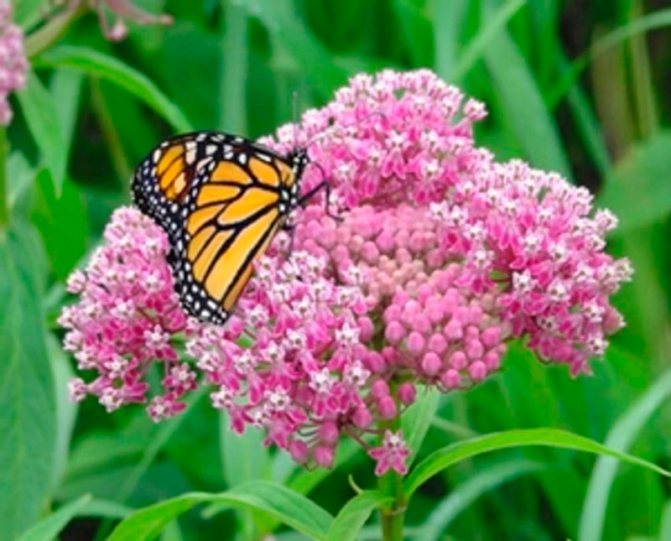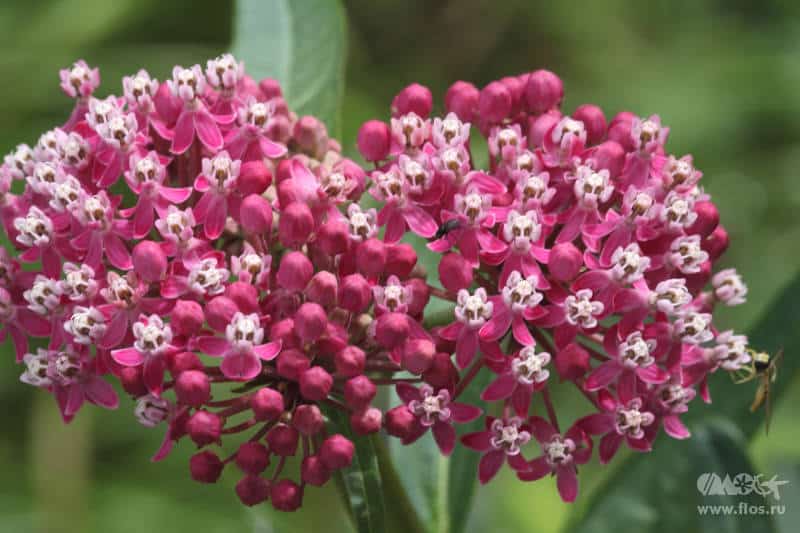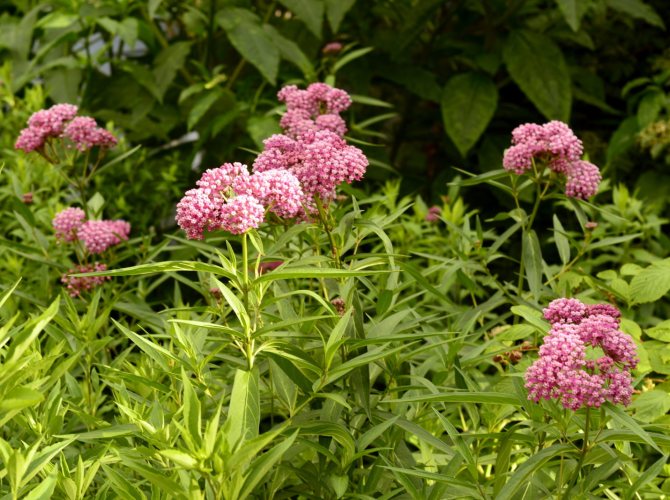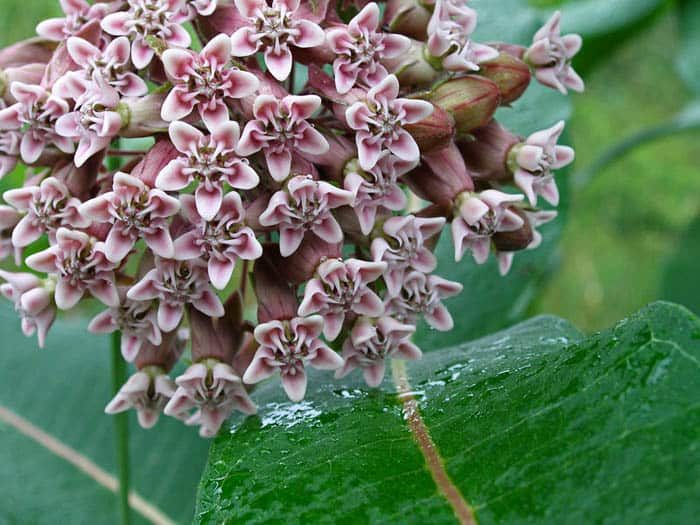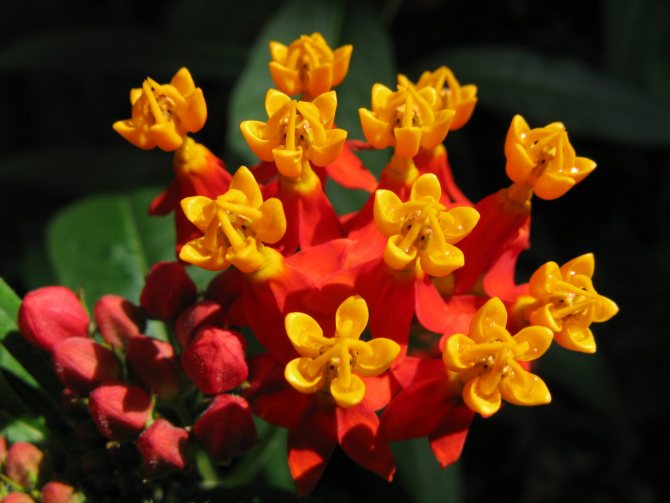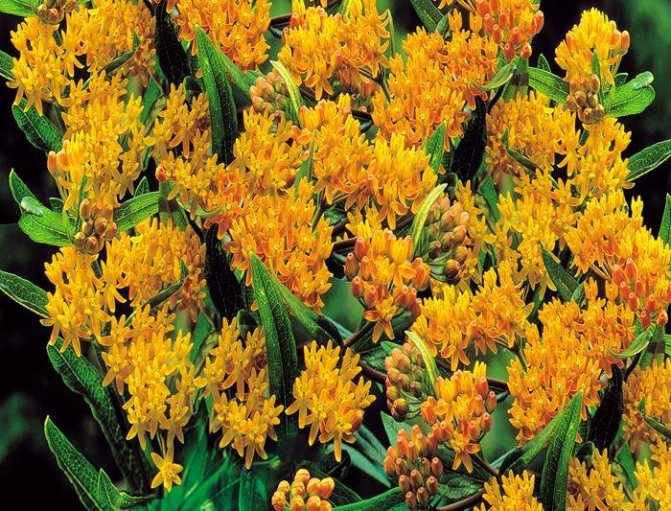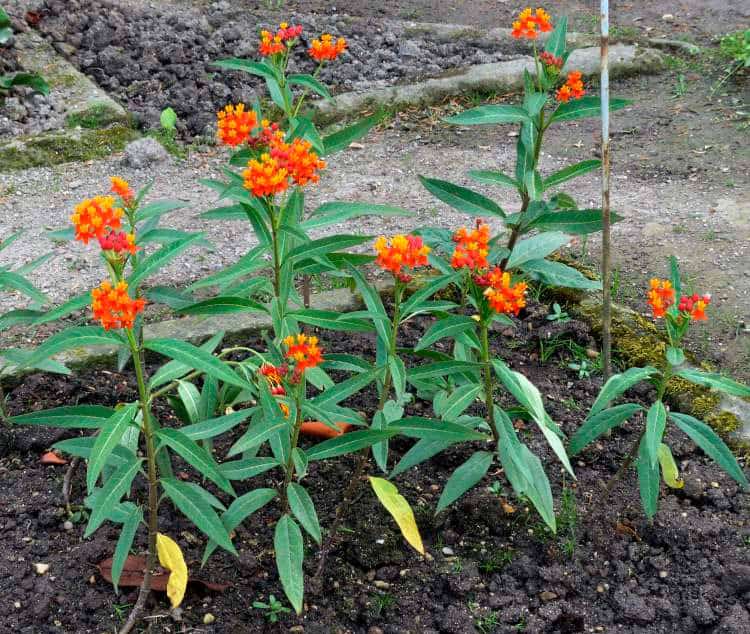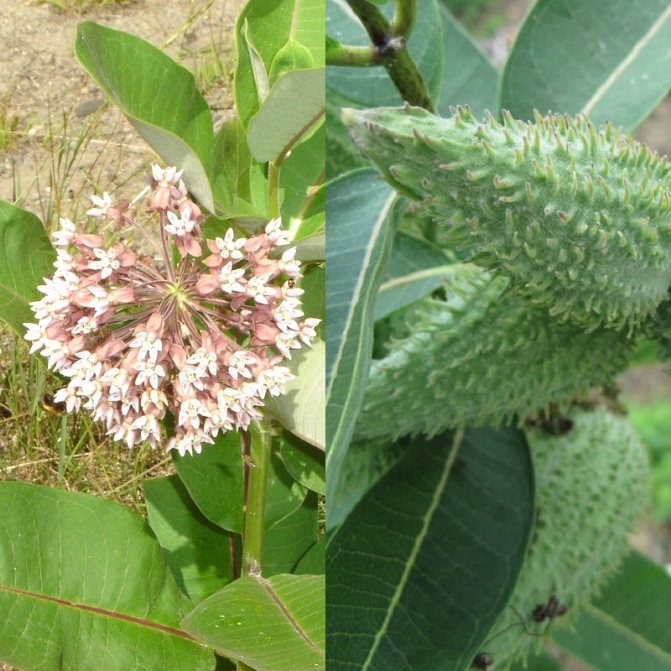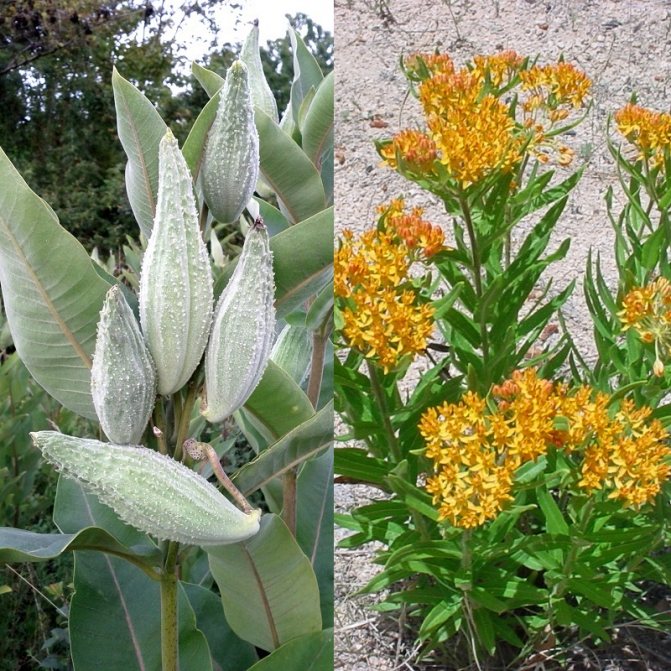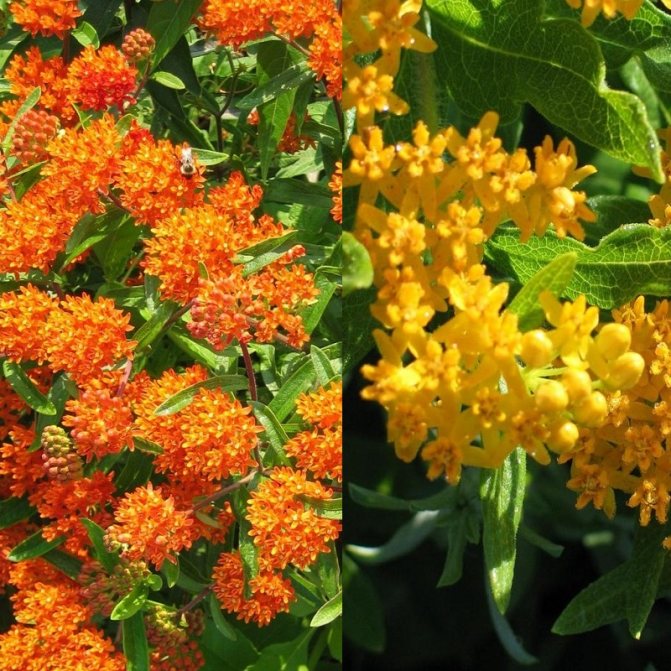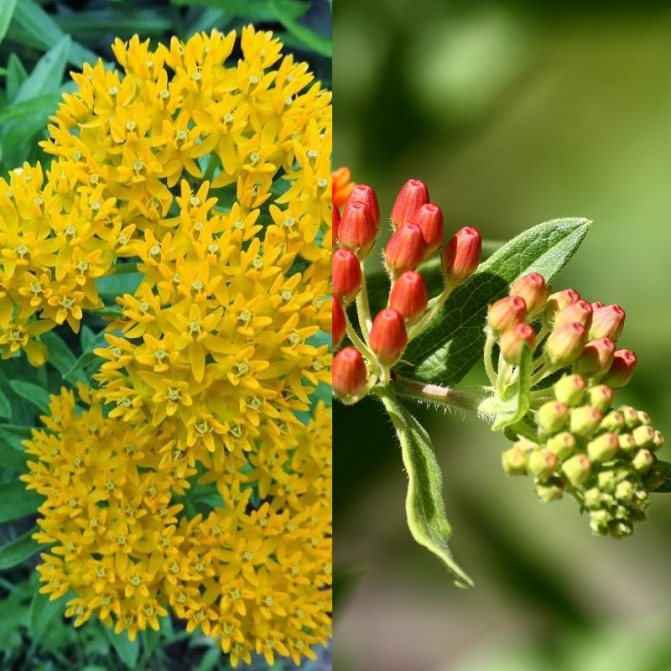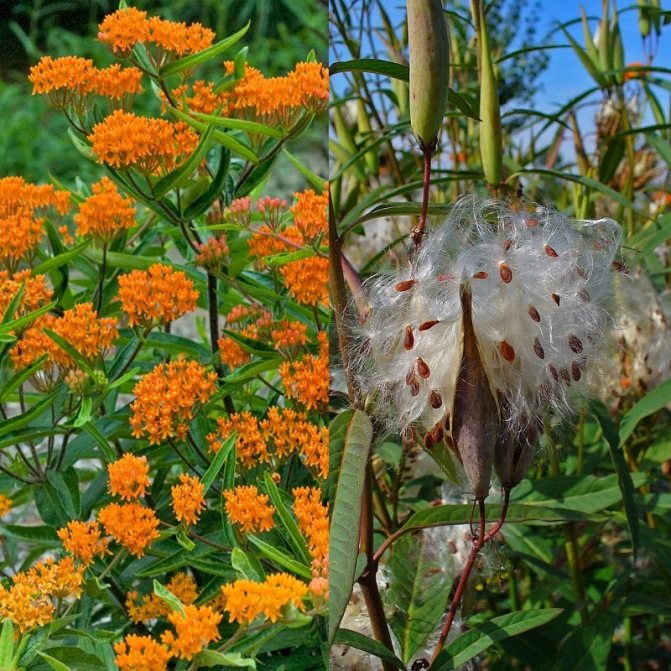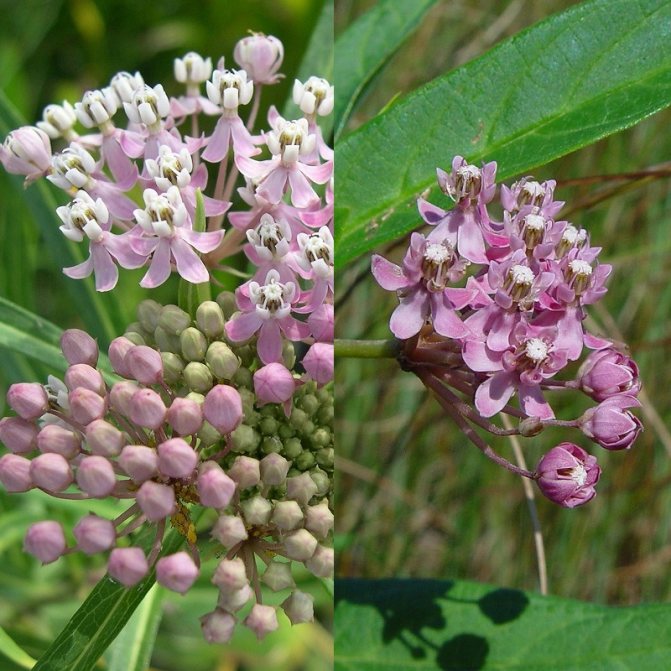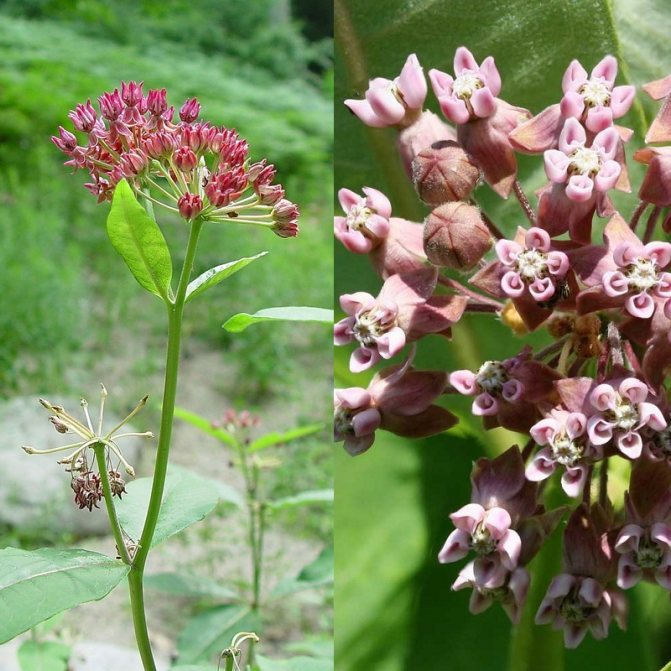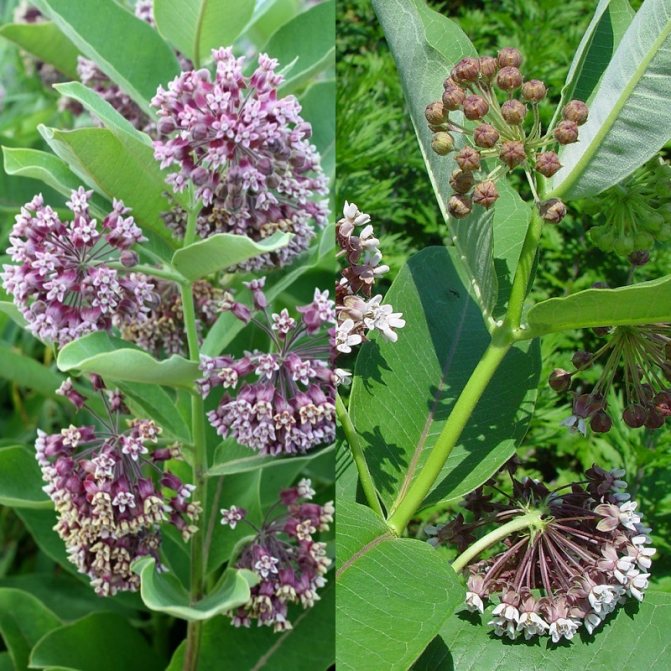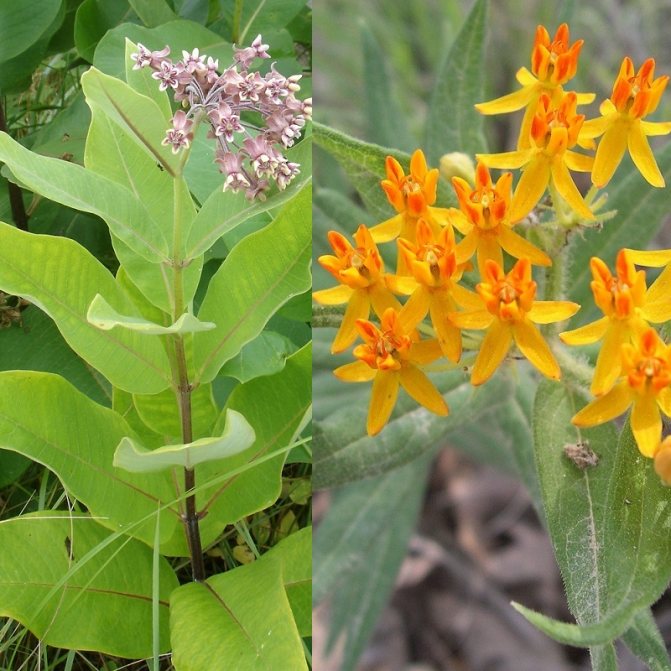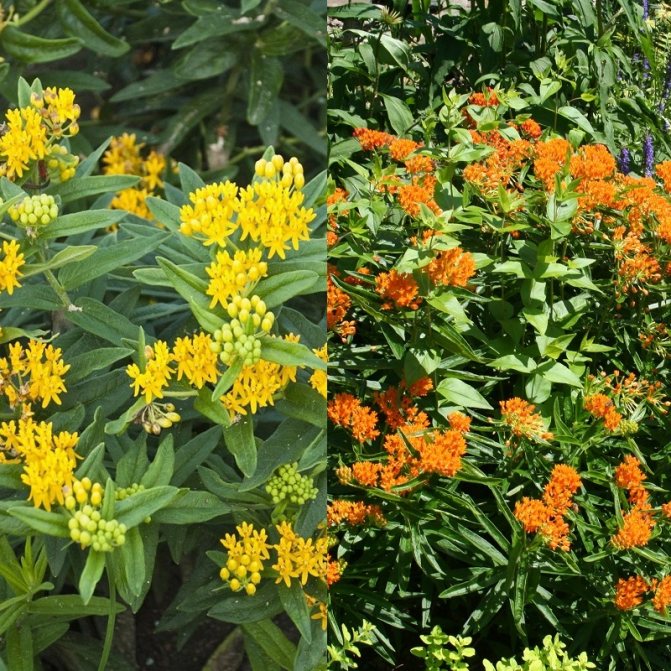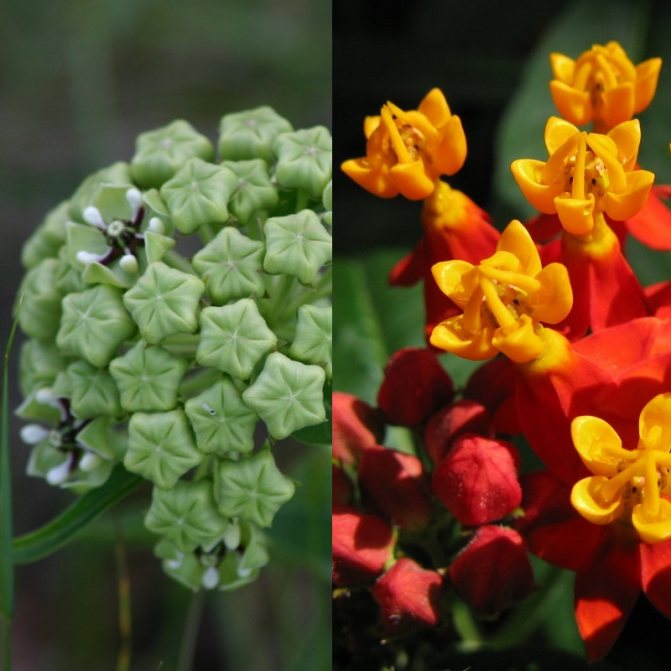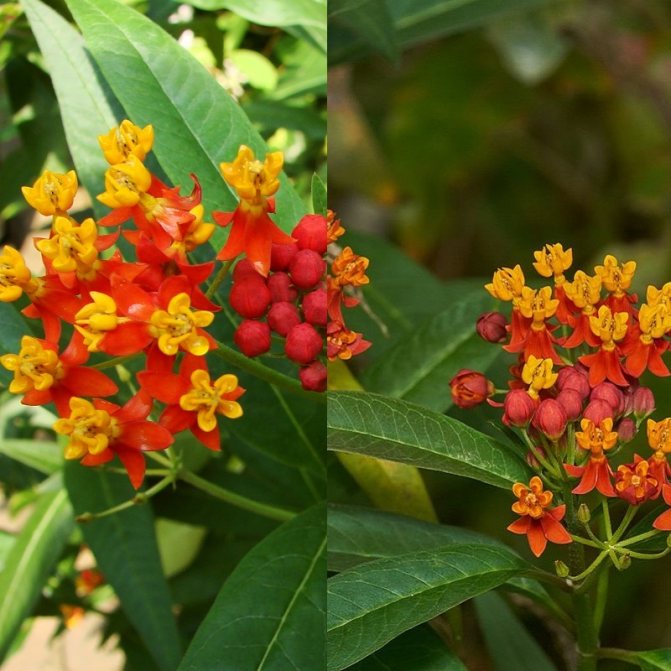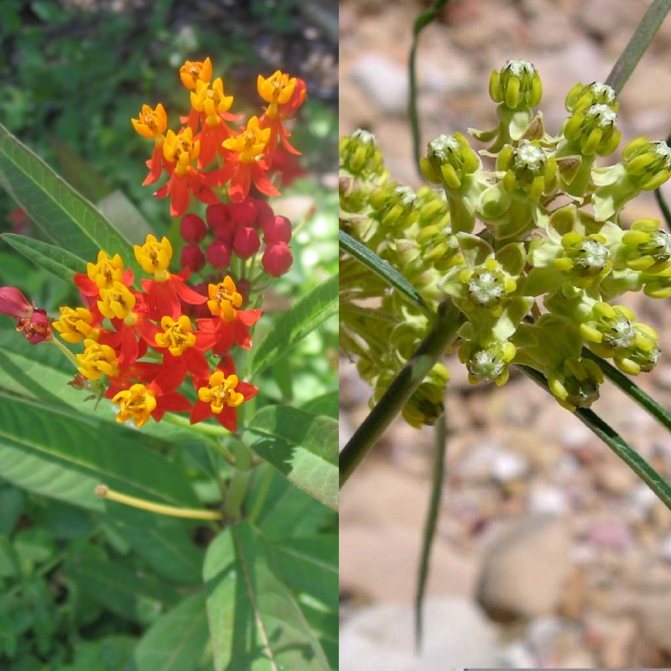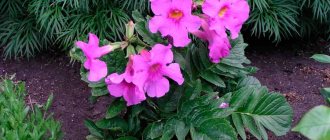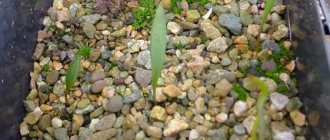Asclepias is a plant that can surprise. The variety of its names is already striking. The scientific name in Latin does not sound so euphonious - Asclepias, got a flower name thanks to the name of a god from ancient Greek mythology, Asclepius, who received the gift of immortality as a reward for his skill in healing. In ancient Russia, this plant was famous under the name "Lastoven" for its spindle-shaped flowers. Well, among the people Axlepias is known as "Vatochnik". This name appeared due to the seeds of the plant, covered with a kind of fluff - "cotton wool".
Another striking property of Asklepias is its ability to decorate and amazingly transform any suburban or garden plot. Add fresh ideas to it, forcing you to take a fresh look at its look.
Features of care for fleece
To the delight of all gardeners, Asklepias, a plant with extraordinary exotic beauty, is completely unpretentious in care. It resiliently, without negative consequences, endures the effects of various weather and climatic conditions of the environment. Not picky about the features of watering and the intensity of sunlight. It grows equally well on loamy and fertilized soils.
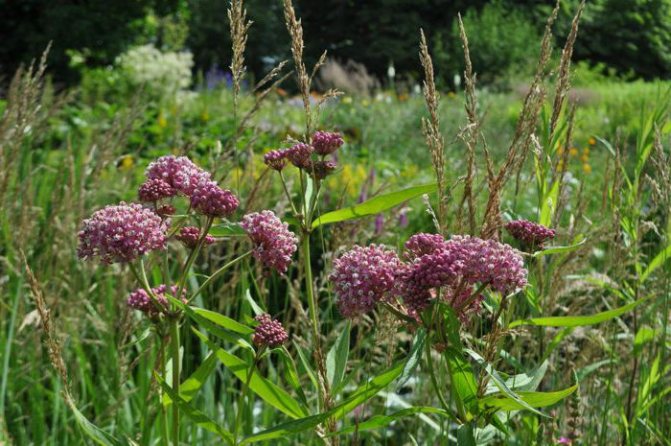
Asklepias planting and care
Vatochnik is prone to rapid growth
- Therefore, it is recommended to plant seedlings one at a time, without being adjacent to other plants, since with its "impudent" root system it will interfere with their development.
- It should be borne in mind that new shoots can appear at a considerable distance from the original plant. Therefore, it is necessary to allocate enough space for Asklepias. About 60 centimeters in all directions from the original landing site.
Vatochnik will not coexist well with any cereal crops. But with other decorative flowers it will look advantageous. For example, with aconite or bells.
Perennial Asklepias is able to grow in the same place for more than ten years. After such a long period, it is still recommended to transplant it. Immediately after transplanting, provide Vatochnik with increased watering for some time.
Possible problems when growing cotton wool
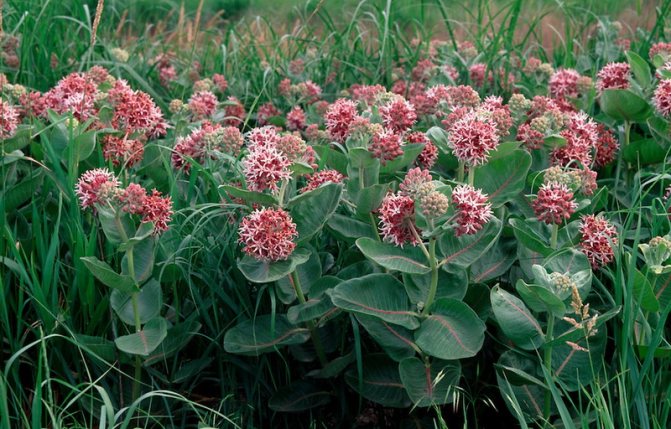

Asklepias outdoor herbaceous plants Asclepias speciosa
Along with its unpretentiousness, Asklepias is also resistant to various flower diseases and parasite infestation. Its only possible enemy is the spider mite - a rather malicious pest for garden plants. You can defeat it with the help of specialized anti-tick products.
When working with handsome Vatochniks, never forget about the toxicity of the juice escaping from its cut stems. For safety reasons, always use rubber impermeable gloves.
Some growing tricks
1. Syrian cotton wool. The organization of a site with a drainage device will help to prolong the safety and enhance the health of your plant. The Syrian variety of Asklepias is very frost-resistant, so you can do without additional insulation for the winter.
2. Meat-red cotton wool, on the other hand, will be better preserved if it is insulated with spruce branches in winter. He feels best in shaded areas with abundant watering.
3. Tuberous Asklepias.The secret of his cultivation as an annual plant is that he, unlike his “brothers, is very picky about the provision of light and watering regime. Pay extra attention to these aspects when cultivating tuberous cotton wool.
4. When forming buds, all Asklepias, regardless of the variety, are recommended to be fed with mineral fertilizers based on potassium sulfate.
Varieties and types of Vatochnik
Syrian cotton wool (A. syriaca)
Perennial up to 150 cm tall. The flowers are large, pink or white. Flowering time July;
Incarnate vatochnik (meat-red) (A. incarnata)
Perennial up to 100 cm tall with purple or red flowers. Flowering time July-August. There is a white-flowered variety;
Tuberose vatochnik (A. tuberosa)
The plant is short about 60 cm with orange flowers. Blooms from July and almost all autumn. There are options with yellow and red colors;
Reproduction of asklepias
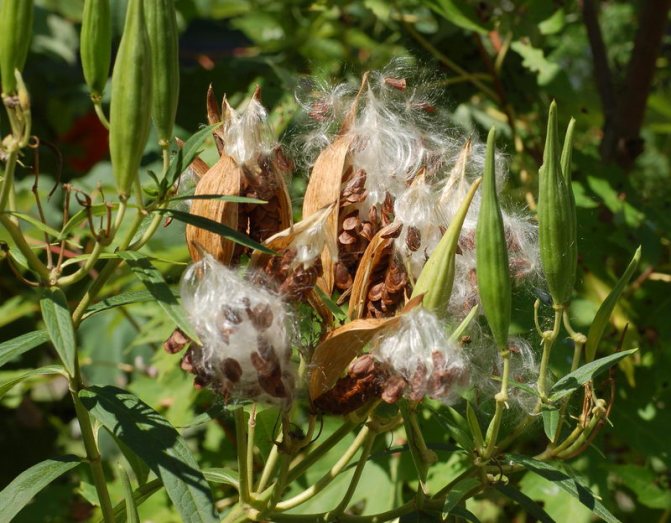

Asclepias' fleece seeds in the photo
Vatochnik is capable of active reproduction by sowing seeds and dividing the bush. For seating, the ideal time would be late spring or late summer. Asklepias is unpretentious in the transplant process, and takes root in new conditions without any problems.
Growing asklepias from seeds for seedlings
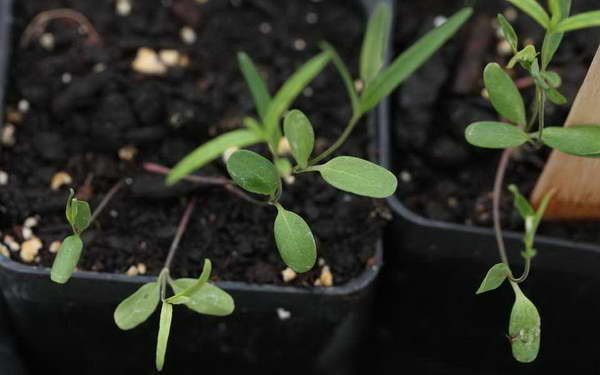

Vatochnik from seeds photo shoots
- Seeds of asklepias must be sown in a separate container by March and grown in seedlings as usual.
- When the first two true leaves appear, cut them into separate containers, and when the heat is stable, plant them in the ground by transshipment.
Sowing in open ground
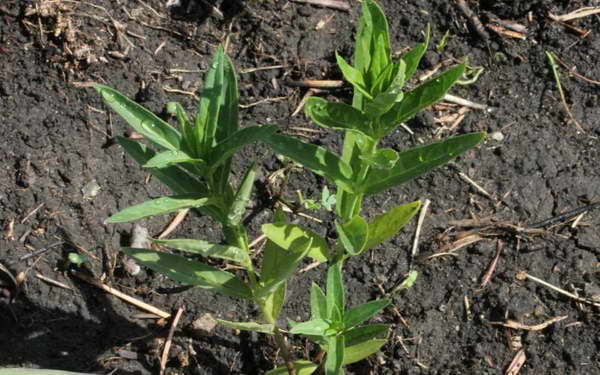

How to plant asklepias in the ground photo
Sowing seeds directly into open ground is possible. In this case, it is necessary to keep the seeds in wet sandy soil in advance, within a month. After seed germination, the plant becomes capable of flowering only after three to four years. Therefore, it is preferable to propagate Asklepias by dividing the bush.
- To increase decorativeness, plants are usually pinched. So they subsequently form beautiful lush bushes.
How does a perennial plant propagate?
There are several ways of breeding cotton wool. Let's consider them in more detail.
Sowing with seeds
If you decide to get a plant from seeds, then they will have to be planted back in April. Seeds are buried to a depth of one and a half centimeters. As soon as the first shoots appear, the container must be installed in a bright place. Temperature cannot be raised above 18 degrees... Watch the soil moisture, do not overdo it with watering.
As soon as the weather settles, frosts will no longer disturb, plant the cotton wool in the place of your choice. Here it will grow for several years. If you purchased seeds from a store, you probably won't get a lot of seedlings. You can, of course, sow seeds in the fall. All varieties of cotton wool, with the exception of tuberose, bloom for the first time three years after planting. If you planted the seeds of tuberose vatochnik on seedlings in early February, then you can get flowering plants in the summer. Only seedlings will need additional lighting.
The second breeding method is grafting
In early June, cuttings up to 15 cm long are made from young shoots. In order for the cuttings to take root, you do not need to wait for the milky juice to dry, but immediately place it in wet sand to form roots. For engraftment it will take up to 20 days.
Propagation by rhizomes
Spring or late autumn, when there are no flowers on the plants, is the most successful time for the reproduction of the willow by rhizomes. They are divided into pieces, 10-15 cm in size, but always with kidneys. These parts must be planted in a permanent place. The plant not only takes root quickly, but will delight you with its flowers next summer.
Interesting facts about cotton wool
one."Vata" Asklepias has a persistent water-repellent effect. Therefore, in the past, Vatochnik's fluff was stuffed into life jackets.
2. Asklepias grows very quickly, while its tall stems do not need support. Thanks to this, you will be able to enjoy the aroma of its buds every flowering period of Vatochnik, if you plant seedlings right under your window.
3. The Asklepias will become welcome residents of mixed flower beds. Butterflies will flock to the sweet aroma of its tall buds, creating a picturesque natural picture right on your garden plot.
Video about the honey plant Syrian cottonweed:
Description of the Asklepias plant
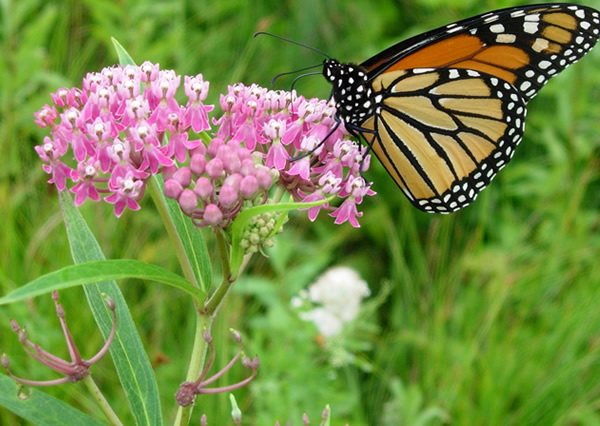

Plant asclepias pink excellent honey plant
There is a large species diversity of Vatochniks. But all of them are united by the following common features: 1. Root system. In all Asclepias, it has a powerful cord-like character. 2. Stems. Hollow inside, have a "wadded" pubescence. 3. Leaves. They are always quite large, but oblong. 4. Blooming. The flowers are small and neat, mostly of warm colors - from white to bright red. 5. Fluffy seeds.
Useful properties of cotton wool
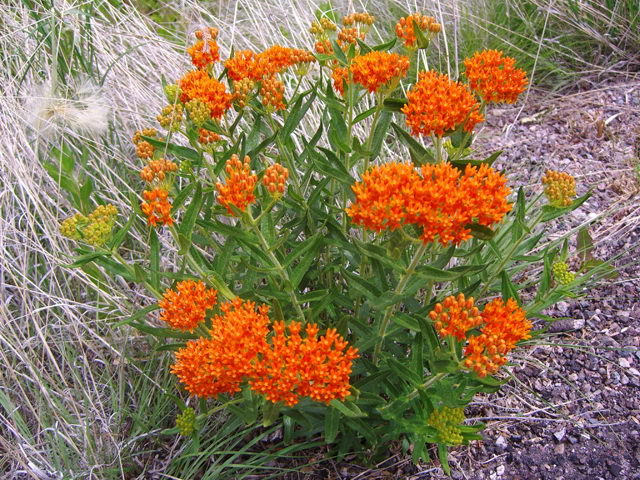

Asklepias Syrian photo
Vatochnik is famous for its medicinal properties. The seeds and leaves of this plant are widely used in folk medicine. With the help of them, various diseases of the skin and the cardiovascular system are treated. However, it should be remembered that Asklepias is a poisonous plant, and when using it, the required dosages must be observed exactly. Therefore, before resorting to Lastovenya's help, you should definitely seek the advice of a doctor.
Cotton wool is used in industry
For example, when it was brought to Europe from North America, it was used as a filler for pillows, twisted into ropes and fibers. Now its seeds are used in the development of modern industrial oils. This is another amazing property of Asklepias. It is incredible how the same part of one plant can be used in such different, if not opposite, areas of human life.
Description of the perennial Syrian cotton wool
The genus of perennial herbaceous plants Asclepias (Asclepias) belongs to the Gullet family (Swallow or Vatochnikovye). In other sources, when describing, the Syrian cotton wool is attributed to another plant family - Kurtovye. But the question of including the entire Vatochnikov family as a subfamily in the Kurtovs remains controversial. In the wild, the culture is represented by shrubs and herbaceous shrubs with a height of 50 cm to 2 meters.
Often used for planting at home as a potted perennial, breeders have bred special hybrid varieties. The homeland is considered to be the tropical and subtropical plains of both parts of America and the African continent. In Russia, not all species can be grown in certain climatic zones, since many have unacceptable frost resistance. In landscape design and phytodesign, Syrian cotton wool is used not only because of its decorative effect during the period of long flowering, but also because it exudes a bright rich aroma.
In the XII century, the plant was brought to Europe as a technical one. It was actively used to obtain rubber from milky juice, as well as for fiber used in the manufacture of fabrics. For some time, the culture allowed the creation of a material that looks like natural silk. Today they are actively used as a garden one as a decorative addition to the site. You can still see large fields near the apiaries, sown with fragrant gentian or milky grass.


